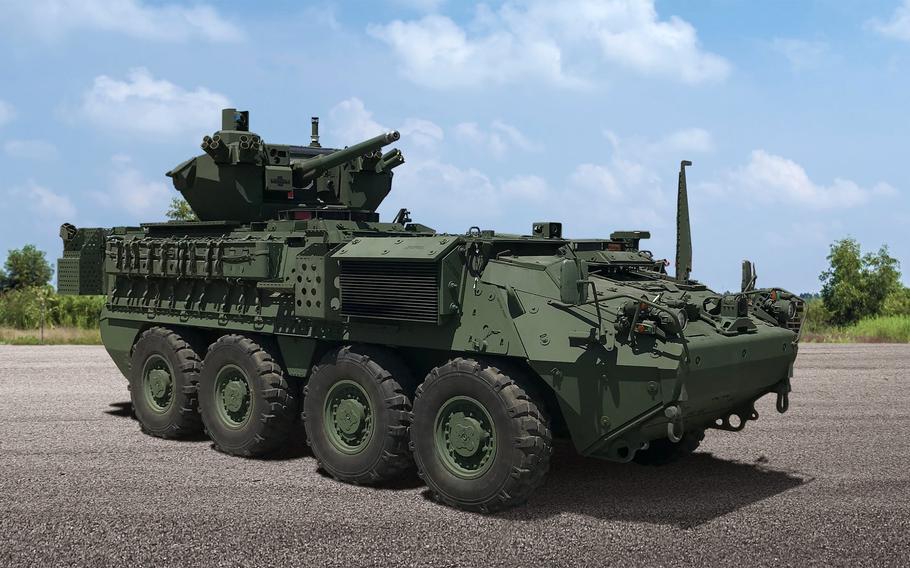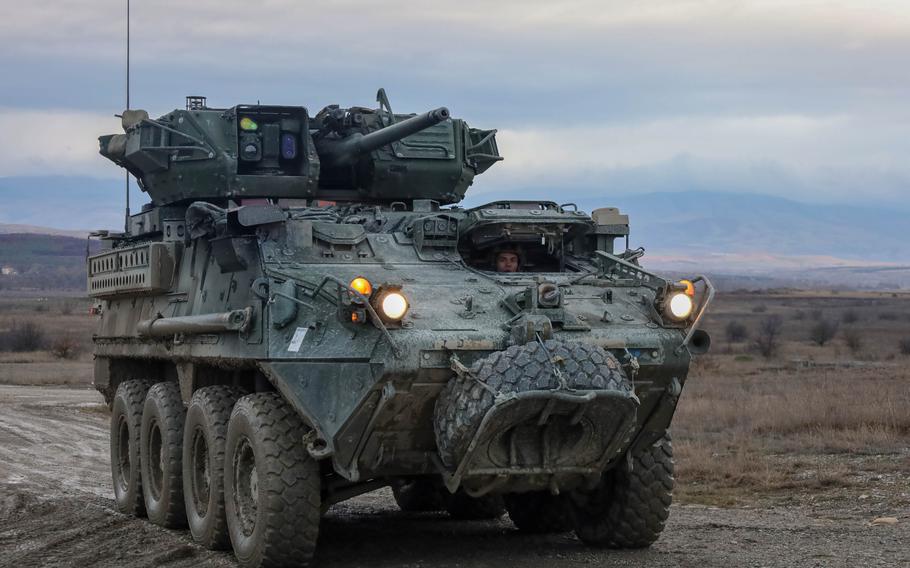
The latest Stryker variant, known as the Medium Caliber Weapon System, or MCWS. The Army's efforts to accelerate an upgrade of the Stryker ended up delaying the final rollout of the new model by at least a year, according to Government Accountability Office findings. (Oshkosh Defense)
The Army’s efforts to accelerate an upgrade of its Stryker combat vehicle — which the service says is needed to meet challenges posed by Russia and China — delayed its final rollout by at least a year, a government watchdog agency says.
Development of the latest Stryker variant, known as the Medium Caliber Weapon System, was plagued with software and hardware problems in 2022, according to a Government Accountability Office report released Wednesday.
Those problems could have been mitigated if the Army had obtained more information from manufacturer Oshkosh Defense before authorizing production to start in March of that year, a GAO audit found.
“The Army authorized the start of production prior to gathering sufficient knowledge of key production steps for a fully informed decision,” the audit said.
According to program officials, the green light was given so that the Army could provide soldiers with the MCWS as soon as possible at a cheaper cost.
But the ensuing complications mean it now won’t be possible to have an all-MCWS brigade until the first quarter of fiscal year 2025 at the earliest, a year longer than was planned originally, the GAO said.

A 2nd Cavalry Regiment Stryker maneuvers in Krivolak Training Area, North Macedonia, Dec. 7, 2023. The Army's efforts to accelerate an upgrade of the Stryker ended up delaying the final rollout of the new model by at least a year, according to Government Accountability Office findings. (Devin Klecan/U.S. Army)
The Stryker is an eight-wheeled armored vehicle that transports infantry into combat and then supports them on the battlefield. Two dozen Stryker variants exist. The MCWS model includes an uncrewed, turreted, 30mm automatic cannon.
After the drawdown of U.S. Army armored combat vehicles from Europe in 2013, the Army reassessed threats in the region and determined its Stryker brigades did not have sufficient firepower compared with potential adversaries.
The MCWS variant is one of the Army’s latest modernization efforts to increase the firepower of its Stryker Family of Vehicles Program, which the Army believes will help deter Russian aggression among other things, the GAO said.
The Army used best practices when designing the MCWS, according to the audit, which says the 2nd Cavalry Regiment in Germany was used to field-test dozens of modified Strykers and provide feedback.
However, the Army did not use best acquisition practices, the GAO said.
The service early on identified some “technical risks” with Oshkosh Defense’s MCWS samples, stemming from software problems. Nevertheless, the Army placed a delivery for 269 vehicles, believing the glitches would be worked out.
In addition to lingering software problems, Army testing found safety hazards and issues with the ability to rotate the turret fully.
The challenges led to a halt in production in early 2023, after the Army already had accepted 19 vehicles, some of which were late and had missing or damaged parts.
The GAO’s audit recommended the Army apply acquisition leading practices before beginning production of future Stryker upgrades. The Army concurred.
The estimated life-cycle costs for the 269 MCWS vehicles was said to be about $1.1 billion. The acquisition cost was estimated at $880 million.